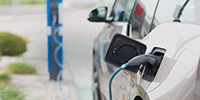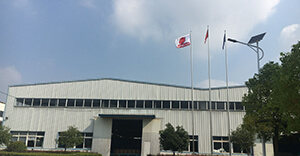Increase Fuel Efficiency by Choosing the Right Forklift Battery
|
With numerous different battery types on the market, it is often difficult knowing whether you’re using the foremost cost-efficient option. Discover the way to boost fuel efficiency and reduce the TCO of your fleet. In 2018, reducing carbon emissions while maintaining fuel efficiency remains a serious issue for several businesses worldwide. it's become even more of a priority since the govt announced to ban the sale of all new petrol and diesel vehicles by 2040. Fortunately, the bulk of forklift trucks—except those required for heavy-duty outdoor use—are already using rechargeable battery technologies. That said, with the subsequently increased requirement for charging stations, how can we ensure energy costs are kept to a minimum? the solution is this: by choosing the right battery technology. Choosing an electrical forklift truck over diesel or LPG will immediately reduce your carbon emissions. Battery operated forklifts produce zero emissions, making them particularly suitable for daily warehouse use and large-scale operations. Currently, there are three different types of battery technology on the market:1. Lead-acid 2. Nickel Cadmium (NiCd) 3. Lithium-ion (Li) Choosing the proper forklift battery to extend fuel efficiency and keep material handling costs down depends on several interlocking factors. Read on to get which is best suited to your operation and business objectives. Lead-acid batteries: the economical optionLead-acid batteries are far and away from the foremost economic and recyclable power source. it's believed that these will still be the batteries of choice for counterbalance and reach trucks for years to return. One area with stark comparisons is battery life over time. If a lead-acid accumulator has been maintained and charged correctly, you'll expect a mean lifespan of 1,500 cycles. A NiCd (Nickel Cadmium) battery under equivalent circumstances will last for about 8,000 cycles. A lithium-ion battery greatly surpasses this, delivering over 10,000 cycles during its lifespan. Despite being the foremost economical, lead-acid batteries’ comparatively low battery life is certainly worth bearing in mind if considering the switch. There also are comparisons to form when it involves battery degradation. Lithium-ion batteries don’t degrade in the least, whereas NiCd batteries offer between 0-2% degradation, and lead-acid batteries can degrade by the maximum amount as 32% during the course of their lifetime. Need to know: Although lead-acid batteries typically degrade more and can’t achieve as many cycles as their NiCd and lithium-ion counterparts, they're far less expensive to run. In fact, lead-acid batteries are up to fourfold less costly than NiCd batteries, and up to seven times less costly than lithium-ion batteries. this is often a striking difference that has the potential to dramatically reduce fleet management costs. Nickel Cadmium (NiCd) batteries: the reliable optionComparatively, NiCd batteries offer roughly 90% of the benefits of lithium-ion batteries—at a fraction of the value. For fuelling work machinery like forklift trucks, NiCd batteries are often considered a reliable middle of the road option. Industrial NiCd batteries are considerably larger than other battery types. Each cell consists of free-flowing liquid electrolyte, which is particularly useful for applications demanding high discharge rates. NiCd batteries are ready to perform under these conditions without becoming damaged or losing capacity, making them a durable, reliable solution.
|














